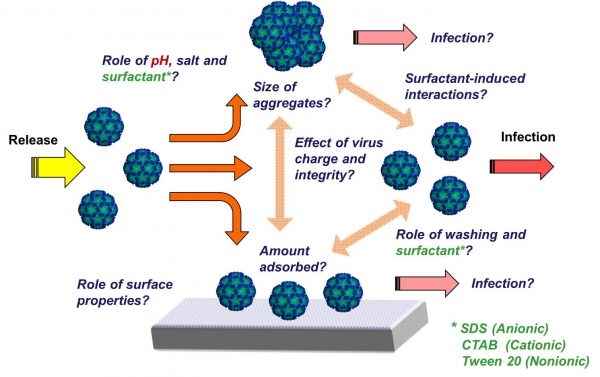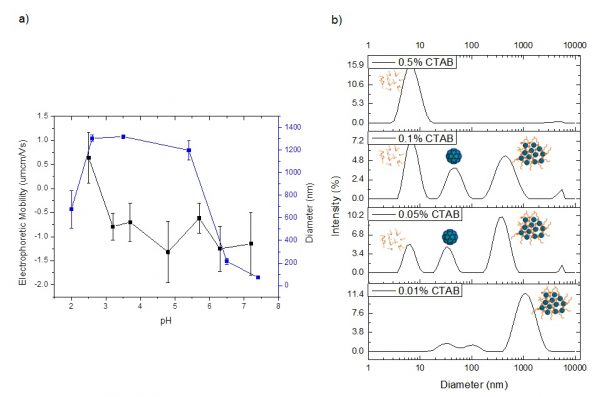Brittany Mertens
| PhD, Chemical Engineering, 2017 North Carolina State University M.S., Chemical Engineering, 2014 North Carolina State University B.S., Chemical Engineering, 2012 Clemson University, Clemson, SC |  |
Research Focus: Characterization and Control of Surfactant-Mediated Norovirus Interactions
Norovirus represents the leading cause of foodborne illness in the United States, producing over 5 million cases of gastroenteritis, 15,000 hospitalizations, and 15 deaths each year.1 Depending on the aggregation state of the virus, as few as 18 virus particles are enough to infect an individual. Although Norovirus poses a significant public health risk associated with epidemic outbreaks, research to prevent its infectivity and dissemination has been limited by the absence of an effective cell culture system to propagate it in the laboratory. The goal of my work is to provide insight into surfactant-mediated Norovirus interactions on surfaces and in aqueous media. We will use this information to clarify conditions that facilitate virus infectivity and develop novel mixtures for efficient virus removal and inactivation.

Figure 1: Schematic of important Norovirus interactions.
Virus surface adhesion
The Norovirus-surface interactions are characterized by an immunoassay based on silver enhancement of gold nanoparticles, allowing us to evaluate the efficacy of different types and concentrations of surfactants in removing Norovirus virus-like particles and eventually Norovirus surrogates from different surface types. So far we have investigated VLP removal from hydrophilized glass microscope slides using anionic (sodium dodecyl sulfate), cationic (cetyltrimethylammonium bromide), and nonionic (Tween 20) surfactants. We have found that the anionic surfactant works best in either removing VLPs from the hydrophilized surface or disassembling the VLPs so they cannot be detected. We have started preliminary assays to study VLP removal from hydrophobic microscope slides, where the factors favoring adhesion and removal appear to be largely different than that with a hydrophilized surface, as expected.
Viruses in aqueous media
In aqueous solution, we study the effects of solution pH, surfactant type and concentration, and presence of intact RNA inside the virus capsid on virus particle aggregation, dispersion, and disassembly using dynamic light scattering (DLS) and electrophoretic mobility measurements. We have established that increasing the concentration of a surfactant beyond its critical micelle concentration causes virus capsid disassembly and breakdown of aggregates. The data are interpreted on the basis of the colloidal interactions and molecular self-assembly of the virus and surfactant. We will perform infectivity assays using a Norovirus surrogate to test whether viral infectious titer decreases at the conditions under which we observe capsid disassembly.

Figure 2: Norovirus particle, protein, or aggregate size in aqueous media with varying a) pH; and b) cationic surfactant (CTAB) concentration.
References
1. . Scallan, E. et al., Emerg. Infect. Dis., 2011, 17, 7-15.
